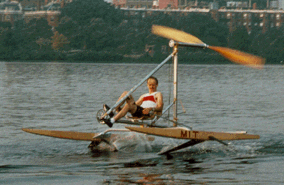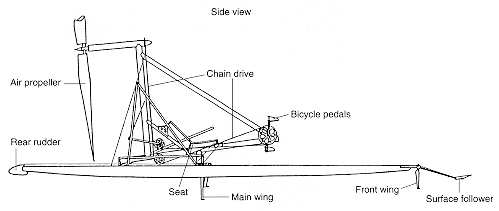| |
|
The use
of a bicycle power train in conjunction with a large air propeller also became
the favored mode of power transfer in the record setting Decavitator hydrofoils.
The photograph and diagram show these components. The air propeller
has a 3 m diameter and provides the required thrust for high speed sprints.
At low speeds the craft is supported on the two 5.2 m pontoons. After take-off
the two front foils (with surface followers to control fly-height) and the
straight main wing (an early V-foil is shown in the photograph) support the
craft. The two front foils provide roll-stability, and in version IV the main
wing pivots to retract the large area take-off surface and submerge the lower
area high speed foil. |
|
|
|
|
|
|
|
|
|
|
|

